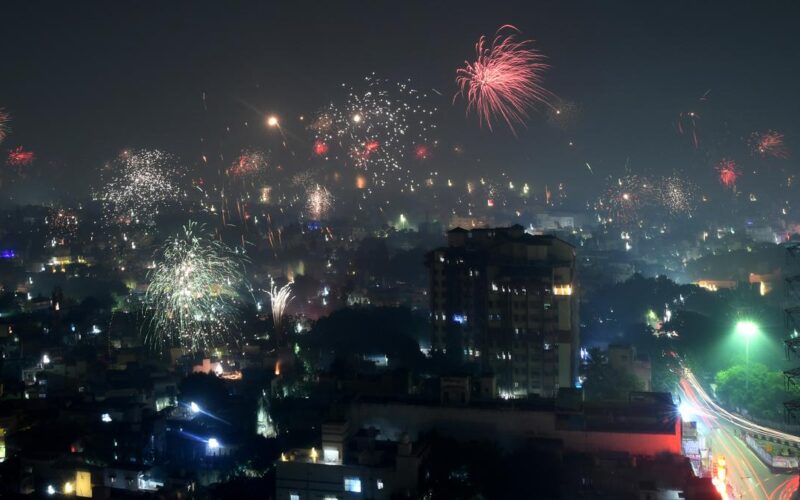Chandigarh (Gurpreet Singh/Balwinder Singh): Air quality in several parts of Haryana has plummeted to alarming levels, with cities like Bahadurgarh, Gurugram, and Rohtak experiencing pollution levels categorized as “very poor.” The toxic air has not only affected Haryana but has also spilled into neighboring Punjab, where pollution levels are still in the “poor” range, further exacerbating the regional air crisis.
Data from the Central Pollution Control Board (CPCB) revealed that as of 8 AM on Monday, Bahadurgarh recorded a hazardous AQI of 358, placing it in the “very poor” category. Similarly, nearby Jind reported an AQI of 350, while air quality monitoring stations in Gurugram’s Sector 51 and Vikas Sadan logged AQIs of 348 and 325, respectively. These readings are well above the threshold for “very poor” air quality, which can pose serious health risks.
Other areas across Haryana also showed troubling signs of air pollution. Rohtak’s AQI was recorded at 343, Bhiwani at 307, and Faridabad at 249. Cities like Kaithal (290), Sonipat (255), Karnal (225), and Kurukshetra (234) all surpassed the “poor” category, indicating dangerous air quality. Sirsa, too, was heavily impacted, with an AQI of 296.
In Punjab, cities like Amritsar (212), Jalandhar (242), and Ludhiana (268) recorded pollution levels in the “poor” category, which, while not as severe as Haryana’s “very poor” levels, still presents a significant health risk, especially for sensitive groups such as children, the elderly, and those with pre-existing respiratory conditions.
According to the CPCB’s AQI scale, readings between 0-50 are considered “good,” 51-100 “satisfactory,” 101-200 “moderate,” 201-300 “poor,” 301-400 “very poor,” and anything above 400 is classified as “severe.” With many areas in Haryana and parts of Punjab seeing readings well into the “very poor” zone, the air is considered highly hazardous to human health.
Health experts have issued urgent advisories, urging residents to take precautions. “Extended exposure to pollution at these levels can result in severe respiratory and cardiovascular issues, even for healthy individuals,” said Dr. Seema Malik, a leading environmental health expert. “Children and older adults are particularly vulnerable, and it’s advisable for everyone to limit outdoor activities and use air purifiers indoors.”
The spike in pollution is attributed to several factors, including vehicular emissions, industrial activity, and the ongoing burning of crop stubble in neighboring states, a practice that often worsens air quality, especially in the autumn months. The combination of these pollutants, along with the seasonal weather changes, has created a perfect storm of poor air quality for the region.
Authorities have responded by advising residents to avoid unnecessary travel, especially during early mornings and evenings when pollution levels tend to be at their highest. In addition, they are urging stricter enforcement of regulations on industrial emissions and open burning.
Environmental groups have also voiced concerns over the long-term effects of such pollution, calling for more sustainable solutions to curb emissions and reduce stubble burning. “The government needs to do more to tackle these pollution sources at their root cause,” said Priya Singh, an environmental activist. “We need better policies for waste management, cleaner industrial practices, and better incentives for farmers to adopt stubble management techniques.”
As the region braces for further deterioration in air quality, it remains clear that urgent action is required to address the growing pollution crisis that is not only impacting the environment but also the health and well-being of millions of residents in Haryana and Punjab.

